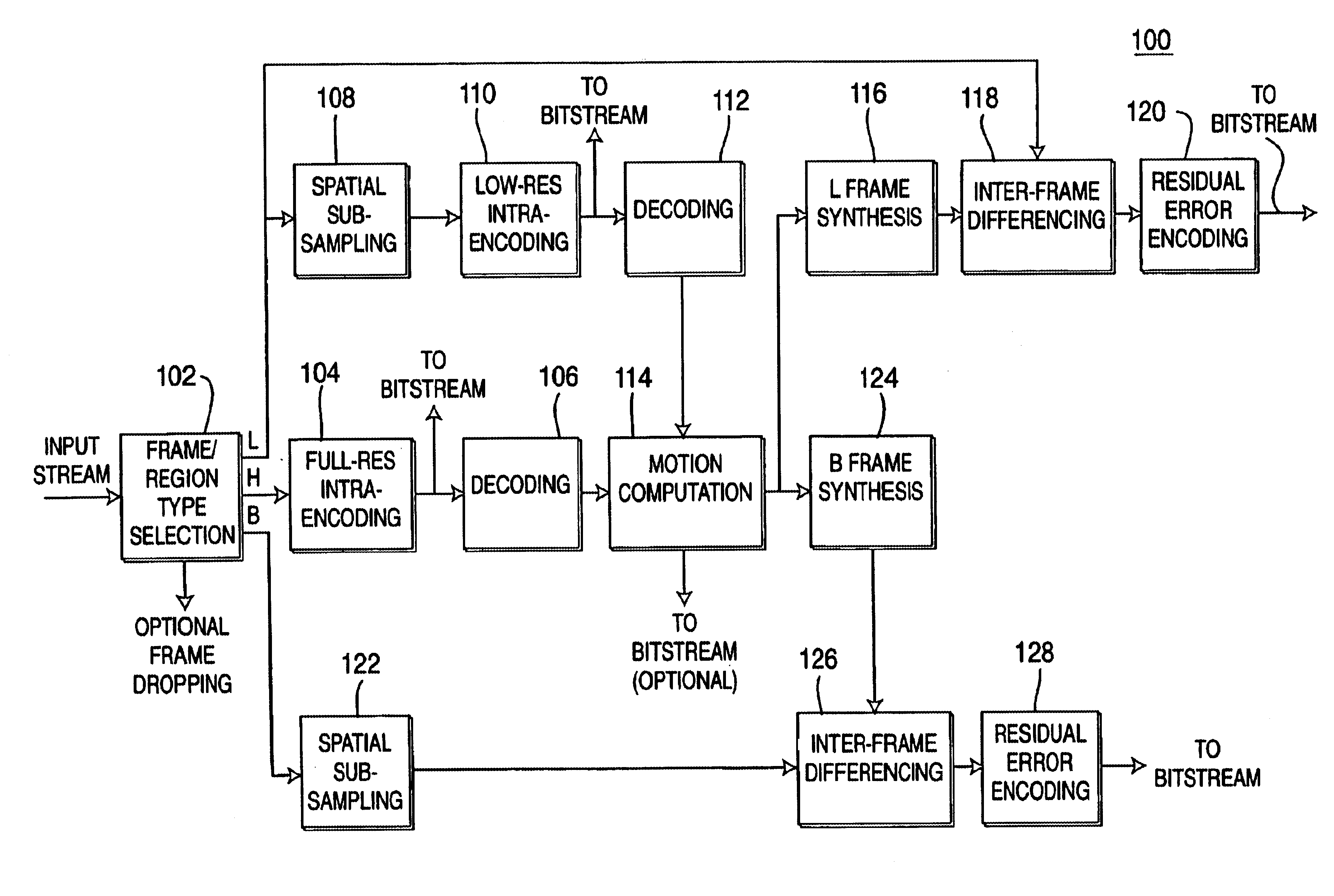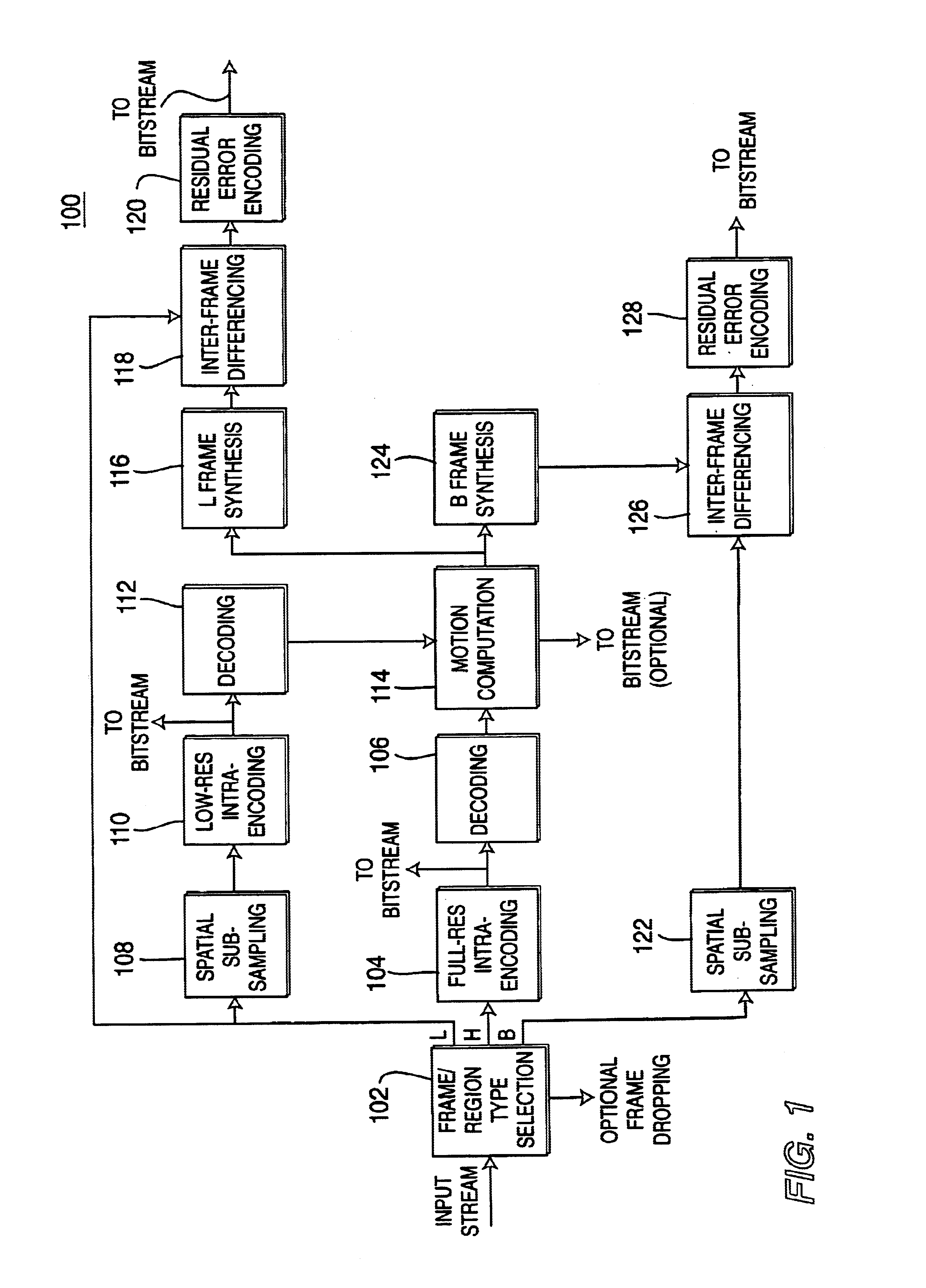Tweening-based codec for scaleable encoders and decoders with varying motion computation capability
a codec and encoder technology, applied in the field of video compression/decompression (codec) processing, can solve the problems of significant degraded output video quality, 56 kilobits/second (kbps)
- Summary
- Abstract
- Description
- Claims
- Application Information
AI Technical Summary
Benefits of technology
Problems solved by technology
Method used
Image
Examples
Embodiment Construction
[0026]In current state-of-the-art motion video encoding algorithms, like those of the MPEGx family, a large part of the bit budget and hence the bandwidth is consumed by the encoding of motion vectors and error images for the non-intra-coded frames. In a typical MPEG2 coded stream, approximately 5% of the bit budget is used for overhead, 10-15% is for intra-coded frames (i.e., frames that are coded as stills), 20-30% is for motion vectors, and 50-65% of the budget is for error encoding. The relatively large budget for error encoding can be attributed to two main reasons. First, motion vectors are computed only as a translation vector for (8×8) blocks or (16×16) macroblocks, and, second, the resulting errors tend to be highly uncorrelated and non-smooth.
[0027]According to certain embodiments of the present invention, motion computation is performed at both the encoder end and the decoder end. As such, motion information (e.g., motion vectors) need not be transmitted. Since motion com...
PUM
 Login to View More
Login to View More Abstract
Description
Claims
Application Information
 Login to View More
Login to View More - R&D
- Intellectual Property
- Life Sciences
- Materials
- Tech Scout
- Unparalleled Data Quality
- Higher Quality Content
- 60% Fewer Hallucinations
Browse by: Latest US Patents, China's latest patents, Technical Efficacy Thesaurus, Application Domain, Technology Topic, Popular Technical Reports.
© 2025 PatSnap. All rights reserved.Legal|Privacy policy|Modern Slavery Act Transparency Statement|Sitemap|About US| Contact US: help@patsnap.com



